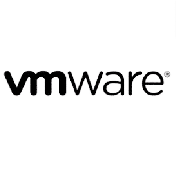Seminarinhalt
Die Teilnehmer*innen dieses Trainings lernen anhand von Konzepten, Szenarien, Verfahren und praktischen Übungen, wie sie Migration und Betrieb einer SAP-Lösung in Azure am besten planen und implementieren können. Sie erhalten Anleitungen zu Abonnements, erstellen und skalieren virtuelle Computer, implementieren Speicherlösungen, konfigurieren virtuelle Netzwerke, sichern Daten und geben sie frei, verbinden Azure und lokale Standorte, verwalten den Netzwerkdatenverkehr, implementieren Azure Active Directory, schützen Identitäten und überwachen Ihre Lösung.
Programm
- Discover the SAP and Microsoft partnership
- Explore your options with SAP on Azure
- Evaluate Microsoft components
- Explore Azure fo SAP compute
- Explore Azure for SAP networking
- Explore Azure for SAP storage
- Explore Azure for SAP databases
- Explore Azure networking for SAP RISE
- Explore identity services for SAP on Azure
- Explore remote management for SAP on Azure
- Explore governance and manageability for SAP on Azure
- Deploy single-instance implementations of SAP on Azure (-tier and 3-tier)
- Implement high availability in SAP NetWeaver with AnyDB on Azure virtual machines
- Explore Azure Center for SAP solutions
- Implement high availability for SAP workloads in Azure
- Implement disaster recovery for SAP workloads in Azure
- Perform backups and restores for SAP workloads on Azure
- Use the planning and deployment checklist for SAP workloads on Azure
- Explore migration options for SAP on Azure
- Migrate very large databases (VLDB) to Azure for SAP
Ensure business continuity and implement disaster recovery for SAP solutions on Azure
- Implement high availability for SAP workloads in Azure
- Implement disaster recovery for SAP workloads in Azure
- Perform packups and restores for SAP workloads on Azure
Zielgruppen
Vorkenntnisse
- Praktische Erfahrung mit Azure IaaS- und PaaS-Lösungen, einschließlich VM, VNet, Lastenausgleich, Speicher (Blob, Dateien, Datenträger)
- Kenntnisse lokaler und Cloudvirtualisierungstechnologien, z. B. VMs, virtuelle Netzwerke und virtuelle Festplatten
- Verständnis der Netzwerkkonfiguration, einschließlich TCP/IP, Domain Name System (DNS), virtuellen privaten Netzwerken (VPNs), Firewalls und Verschlüsselungstechnologien
- Grundlegendes Verständnis von Active Directory-Konzepten
- Erfahrung mit Linux-/Unix-Umgebungen
- Solide Kenntnisse über SAP-Anwendungen, SAP HANA, S/4HANA, SAP NetWeaver, SAP BW, OS Server für SAP -Anwendungen und Datenbanken
- Verständnis der SAP HANA-Bereitstellung und -Konfiguration
- Praktische Erfahrung mit der SAP HANA-Verwaltung
- Kenntnisse zu SAP-Produkten wie SAP HANA oder SAP NetWeaver



